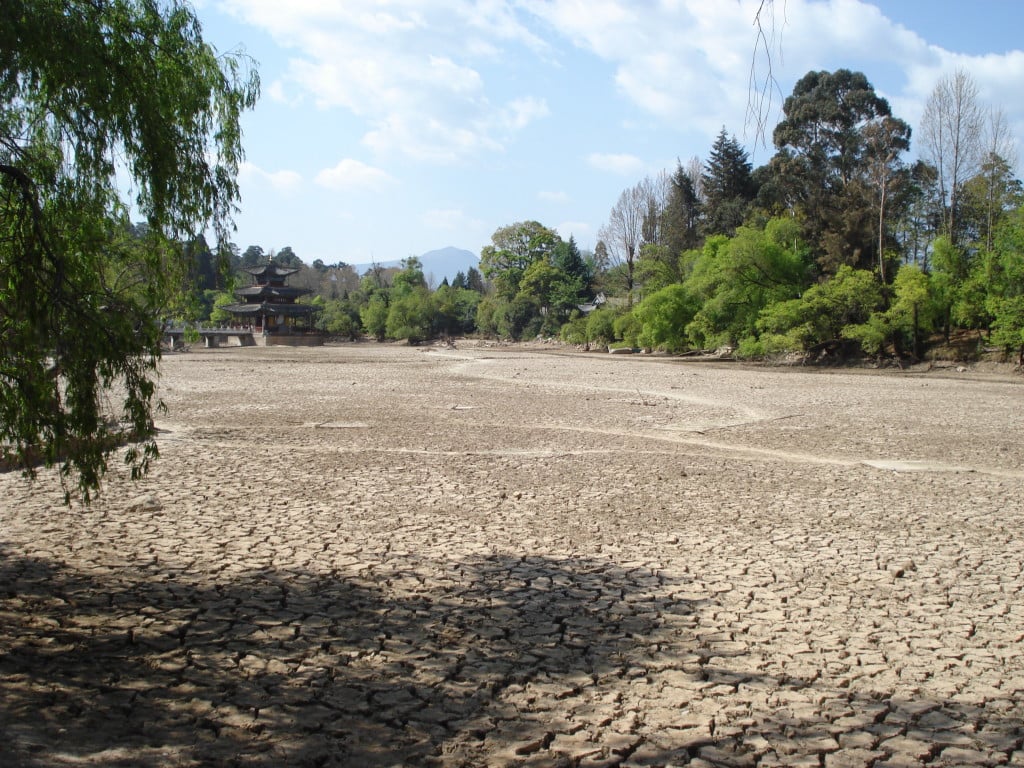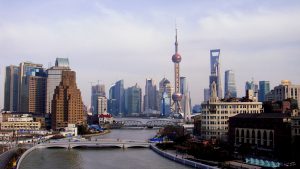Editor’s Note: In 2016, Young China Watchers (YCW) partnered with the Lau China Institute at King’s College London to launch an inaugural essay competition on the topic: “How will China change the world?” After receiving dozens of impressive submissions from young voices all around the world, Lauren Dickey’s impassioned essay on China’s water security stood out to the judging panel. Drawing from her own travels in Yunnan, Lauren traces the growing water crisis from Mao Zedong’s development projects post-1949 to Zhongnanhai’s nascent “sponge city” pilot program.
One crisp spring morning in Lijiang, Yunnan province, our family walk took us into a seemingly innocuous Chinese park. Pagodas and decorative rocks lined the manicured paths that led to the central point, Black Dragon Pool. But there was no water to be seen. Only barren earth, cracked and dried by the sun’s unforgiving rays.
I called out to a fellow walker, “Why is there no water in Black Dragon Pool?”. The response was sobering. “For the last five years, there has not been any water in the pool,” they replied.
At the time, China was in the midst of a drought affecting five provinces, 51 million people, millions of livestock, and five million hectares of land reaching into parts of neighbouring Vietnam and Thailand. Police battalions and engineers were dispatched to help residents in affected provinces secure access to water for daily living. Emergency grain supplies and water trucks were sent.
Beyond the lives lost and crops destroyed, economic damage from the nearly year-long drought was estimated to exceed 24 billion yuan (US$3.51 billion), costing the country more than 2% of its GDP, largely in public health costs.
But the problem is much larger, and with greater implications than just the occasional drought in China. Soaring demand and insufficient supply is a classic economics problem faced around the world on a daily basis. But the challenges posed by insufficient water resources amid consistently high demand are of a different nature; these imbalances have immediate implications for human welfare.
In the years ahead, Beijing’s approach to its domestic water problems will set the tone for the global response to today’s water crisis.
“A fish in a dry gutter”
According to a 2015 United Nations report, the world will have 60% of the water needed in 2030 assuming current public policy and conservation efforts continue with no significant changes.
The situation is arguably made more dire by the reality that the entire Asia-Pacific region boasts only 36% of global water resources, making per capita water availability the lowest in the world.
China contains only 7% of the world’s freshwater supplies. In Beijing alone, the city’s water volume is 150 cubic metres per person, significantly below what the United Nations considers “water-stressed” at 1,700 cubic metres or less.
Such statistics do not even begin to touch upon the hinterlands where water supports agrarian communities and the livelihoods of many Chinese.
As China looks to the future, the problem extends well beyond the necessity of ensuring continued access to sufficient water supplies. Other, predominantly urban, water challenges include water quality control, sewerage and wastewater treatment system networks, pollution control, and ecosystem degradation.
Simply put, the essence of whether or not China’s government is able to sustain the lives of people living in its largest hubs and rural villages will be decided by how it adapts to and addresses the current water crisis.
The implications
As both a public policy and environmental dilemma, how Beijing handles the problem portends to pave the way for others facing similar water shortages around the world.
Beijing does not face an easy balancing task: Its policies must allocate enough water to ensure agricultural and industrial productivity while protecting both social stability and the omnipresent factor of the Communist Party’s legitimacy. If China is unable to successfully quell the bubbling undercurrents, the consequences will be severe.
Manufacturers with water-intensive practices will leave the country and look elsewhere, a trend already occurring due to a gradual climb in Chinese wages. Farmers unable to tend to their crops and livestock will deplete the resources of China’s breadbasket, requiring Beijing to look beyond its borders for everyday staples.
Perhaps most severe of all, insufficient water supply could breed public discontent, a trend perceived within the Party’s highest echelons as volatile and potentially destabilising.
For the rest of the world, the consequences would be no less severe; even as other countries face similar water shortages, geopolitical relationships will be made further complex by a China struggling to meet one of the most fundamental needs of human life. Whereas other valuable resources – oil, for instance – are being supplemented with alternative energy sources, there simply is no alternative to water.
But before turning to how China has begun to address water scarcity and mitigate the above implications, it is worth pausing to examine the underlying sources of the current problems.
The history
After the founding of the People’s Republic of China in 1949, Chairman Mao Zedong’s water development projects echoed large-scale, capital-intensive Soviet-style projects. According to Harvard University historian David Pietz, Mao’s water development investments created “substandard irrigation systems, damaged soil fertility through poor drainage and over-exploited water reserves.”
Short term gains of raising agricultural productivity came at the cost of depleting water supplies. Groundwater overdraft has continued nearly 70 years later with declines exceeding one metre per year across northern China.
The problems created through the Mao era water management systems have been compounded by changes in the environment, ranging from increasingly warmer temperatures and deforestation for rubber and eucalyptus plantations, to continued soil erosion.
Widespread pollution and water-intensive industrial uses in coal and livestock – known as “virtual” water exports that leave one province for another – further exacerbate infrastructural and environmental complications. It is with these problems in mind that Beijing has continued to strive toward finding an appropriate solution, efforts to which we will now turn.
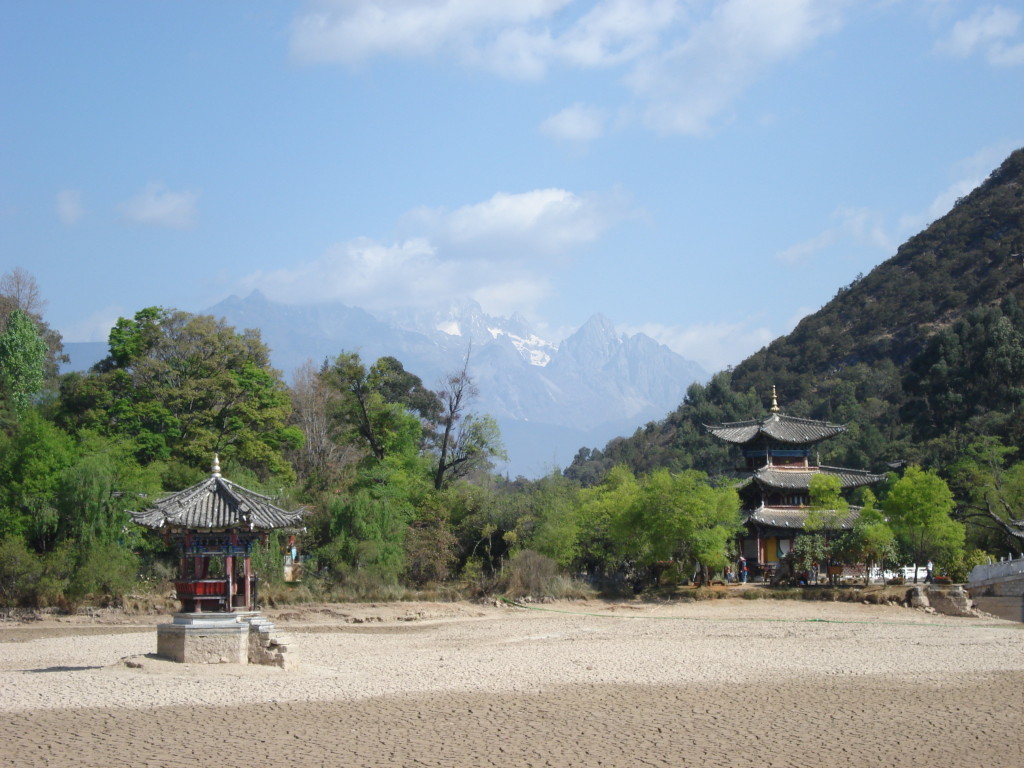
Black Dragon Pool in 2012 (Image: Lauren Dickey)
“Prescribing the right medicine”
For the savvy China-watcher, there are several familiar solutions to address China’s water crisis that are already in place. Where more potential lies for the future, however, is in the decisions Beijing has yet to make – the innovations and changes to public policy it will pursue in order to ensure its people have continued access to this precious natural resource.
It is the decisions that China makes about managing and resolving its water crisis that can transform how other countries view the same issue. Beijing is thus at a critical juncture, as both its failures and successes in managing water scarcity come under increasing scrutiny, and determine the extent to which Beijing is able to shape the global response to today’s water crisis.
Beijing has turned to the Tibetan Plateau to bolster its water supply, a headwater for 10 of Asia’s major rivers and a source of water for one-fifth of the global population. Dams built by China over the last decade divert water from these rivers, policy decisions with external ramifications that have led to water power becoming a geopolitical battleground.
For now, the seat of the central government in Beijing is sufficiently far-removed from the ripple effects of continued infrastructure programmes. But not all water movement projects have gone unnoticed. Few projects received as much criticism from beyond Chinese borders as the Three Gorges Dam, the world’s largest hydroelectric dam on the Yangtze River.
Construction of the dam’s 410-mile-long reservoir necessitated the relocation of Chinese villages en masse. Even as 1.3 million citizens were offered compensation to find a new home, such relocation efforts were plagued by local corruption.
The dam also buried historic and cultural artefacts, such as those of the Ba people from 4,000 years ago. Amid continued flooding, concerns have recently surfaced that the dam is not up to protect against a “once in 1,000-years” flood as originally touted.
Additionally, with two of three stages in operation, the South-to-North Water Diversion Project will move water over 750 miles from Yangtze River tributaries to the northern plains.
Already one of the most expensive engineering projects in the world, the finished series of canals and waterways aims to channel 44.8 billion cubic metres of freshwater annually, but like the Three Gorges Dam it has not come without impacting hundreds of thousands of people.
Beyond shifting existing water resources around, another approach Beijing has presently taken has been a re-examination of existing environmental policy and standards.
Water management has consistently held a place in Beijing’s Five-Year Plans, with the most recent plan calling for both the implementation of “the strictest management system for water resources…and a national [groundwater] monitoring system” as well as an online real-time pollution monitoring system.
In theory, pollution levels have come under closer scrutiny with continued revisions to the law on prevention and control of water pollution as well as more stringent work from both the Ministry of Environmental Protection and non-profits to measure and track emission levels.
To support efforts to clean up Chinese waters, the government pledged to spend US$333 billion on a water pollution “action plan” and to put water usage caps into place in five provinces.
What these policy shifts ultimately signal is the creation of a stronger foothold for accountability. Individuals and entities alike are being held to a standard of what an acceptable environmental footprint looks like. Those that abuse water resources – be it for industrial or agrarian uses – will face consequences ranging from naming and shaming to forced closures and criminal punishments.
But more work remains in what is a fundamental reworking of attitudes, approaches, and institutions. Infrastructure projects, including dams and the south-north diversion scheme, are a start but even as select provinces get “more crop for their drop,” others struggle with the task of cleaning up existing water supplies.
Even if existing policies are rigorously enforced, and the infrastructural innovations work as hoped, Beijing still risks facing a predicted water shortage of 199 billion cubic metres in 2030, even as domestic population numbers peak.
Beyond cleaning up and regulating existing water supplies, the central leadership must continue to think creatively about how to mitigate the crisis at hand. Large-scale water transfer projects and a plethora of policy initiatives alone will not be enough.
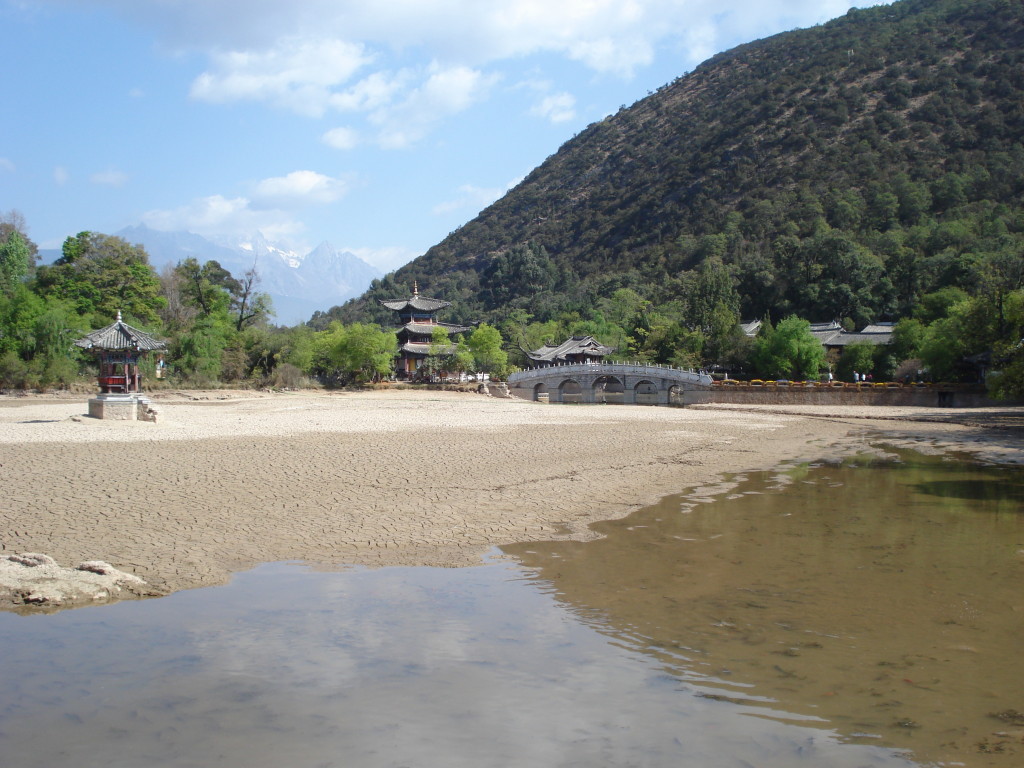
Black Dragon Pool was declared a water conservation area in 2010 (Image: Lauren Dickey)
Urban planning is the most significant factor in determining how and whether Beijing’s resolution of its water crisis can be translated to the global level. China is notably progressive in its adoption of urban water recycling plans, with the “sponge cities” taking hold in 16 urban centres across the country.
Funded by three Chinese ministries, the sponge city program will deal with problems of both too much and too little water through the construction of permeable roads and public spaces, bioswales, filtration pools, and wetlands tasked with absorbing and recycling 70% of rainwater in China’s cities.
Other technological advances include seawater desalination, a costly process with significant negative environmental impacts if not carefully managed. Given existing requirements of finite natural resources for desalination, China could opt instead for solar-powered plants (as in Saudi Arabia), desalinating water by locale (as in London), or even desalination through electrical shockwaves or graphene filters.
Capital spent on water-intensive technologies can be incentivised by the central government for re-directing into new technologies. Similarly, existing water catchment, recycling programs, and wastewater treatment can be improved and better utilised.
Existing small- and medium-size catchments of 100,000 square kilometres or less can better function in securing water supplies if Beijing spends the necessary resources to invest in reforestation and environmentally sound agricultural practices.
Water recycling requirements are already on the right track, with the central government requiring businesses consuming huge amounts of water to use recycled water and seventeen new higher tech treatment facilities to be built in 2016 for the Beijing vicinity alone.
Yet, while China can treat more wastewater than any other nation in a single day, many facilities are operating with old technology – using extended aeration processes—and consuming upwards of 50% more power.
Treatment facilities are further impaired by high costs and low performance, a “one step forward, two steps back” conundrum some executives hope to solve through a Concept Waste Water Treatment Plant (CWWTP). Based on ideas largely from beyond Chinese borders, the CWWTPs built outside Beijing by 2018 will be formally rolled out across the country over the 2030-2040 decade.
At the core of the CWWTP model lies a recognition to shift from centralised to decentralised management, adapting infrastructure and processes to suit the functions of the different provinces instead of taking a one-size-fits-all approach.
Finally, and in addition to the aforementioned technological advances, Beijing must develop national education campaigns to raise awareness and encourage the population – particularly in drought-prone areas – to change their consumption behaviours.
Such campaigns could mirror the pervasiveness of other nationwide efforts to foster “core socialist values” and laud the ruling Communist Party.
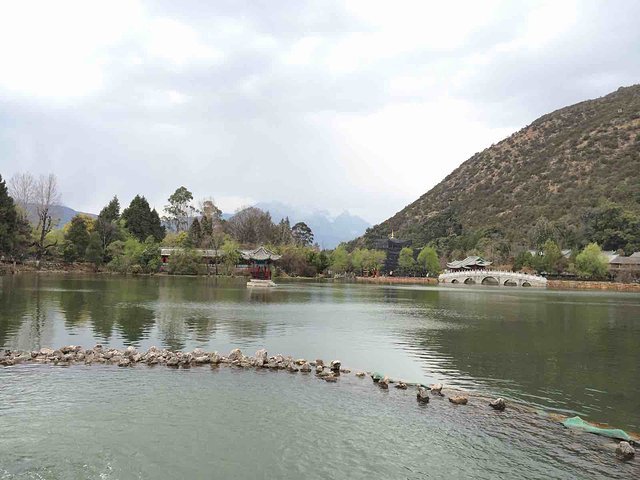
Although it was dry from 2012 to 2014, Black Dragon Pool’s water level has now been restored, as shown in this photo from 2016. Image: Mr_饭糊了/ Qunar.
Conclusion
A 1993 issue of National Geographic magazine powerfully penned, “all the water that will ever be is, right now.” The continuation of human life is thanks to water. Beijing is rightly concerned about environmental degradation, particularly water pollution and scarcity.
While a lack of water resources may not necessarily lead to overt conflict, the severity of consequences brought on by the demand for water far outpacing supply should not be underestimated.
China stands to fundamentally alter how the world responds to depleting water reserves through its own domestic response. Each new policy initiative, technological advance, or infrastructural development can signal to other countries in both the global north and south how they, too, can adapt to decreasing water supplies.
For the decisions that face subsequent challenges – such as questioning the flood control capacity of Three Gorges Dam – China’s partners and friends can learn from its mistakes. But it is the success stories that others will emulate. Over the next decade, the government’s ability to apply cutting-edge treatment technology, to enforce environmentally-sound policy, and its overall efforts to clean up its existing water supplies will have ripple effects around the globe.
If China is able to transition away from the Mao-era large-scale, centrally-managed water infrastructure in favour of more advanced “green” processes and capabilities, China stands to lead the global efforts to tackle water scarcity, carving out its niche as a truly “responsible stakeholder” in the worldwide water supply.
